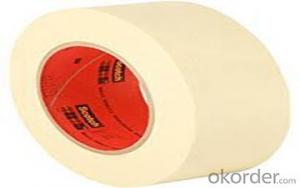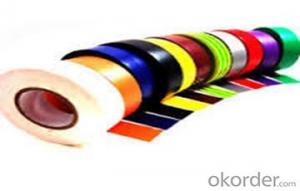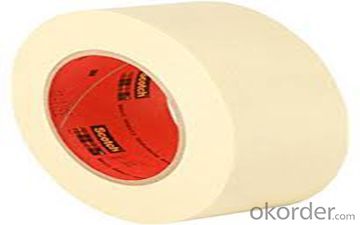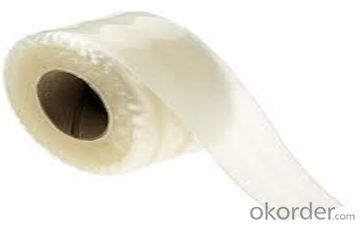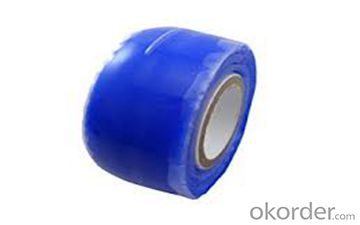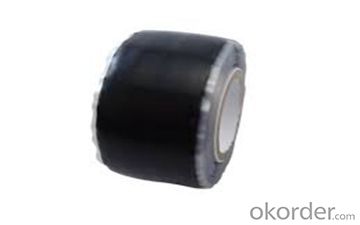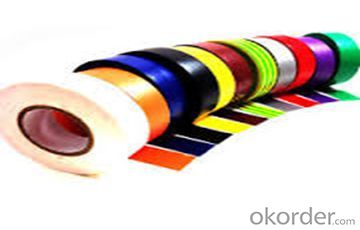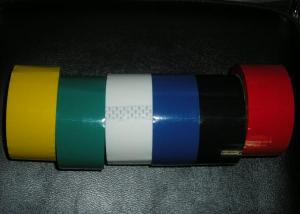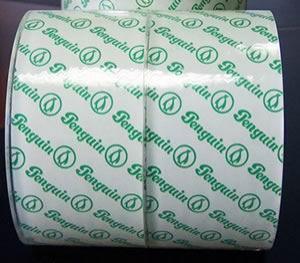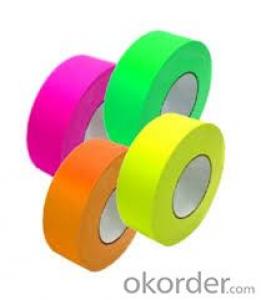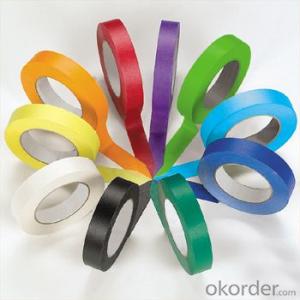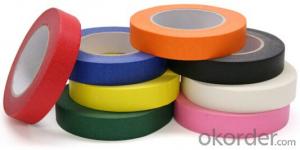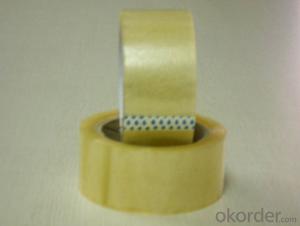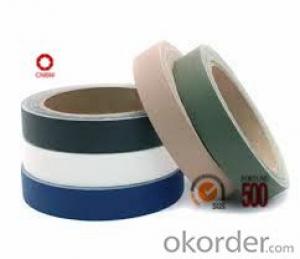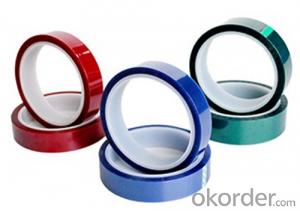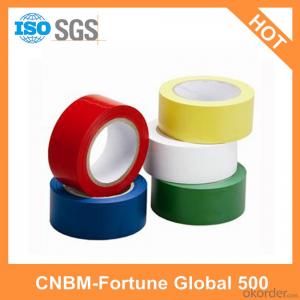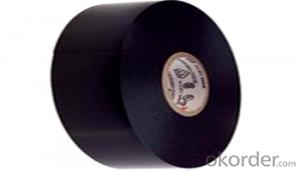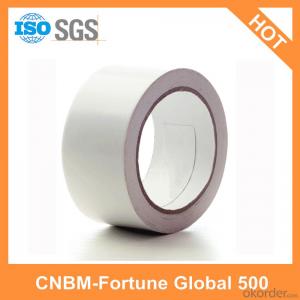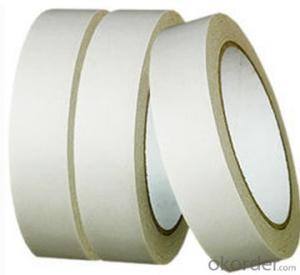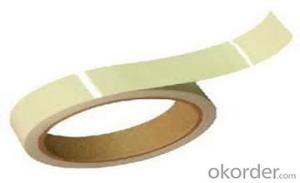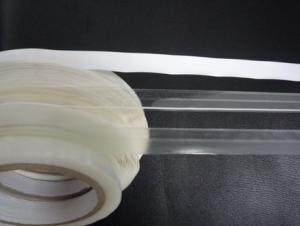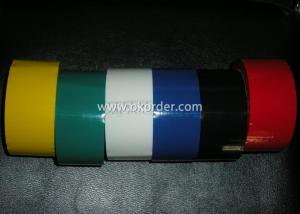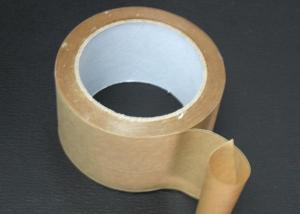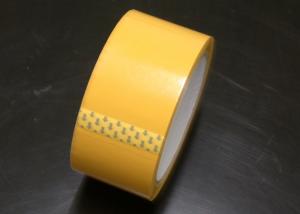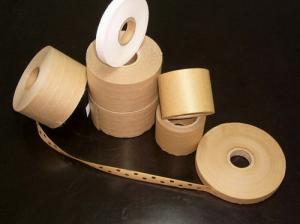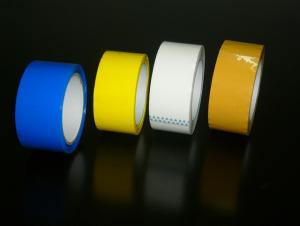Wholesale Reflective Clothing Fabric Scotch Reinforced Packaging Tape
- Loading Port:
- Tianjin
- Payment Terms:
- TT OR LC
- Min Order Qty:
- 7500 m
- Supply Capability:
- 500000 m/month
OKorder Service Pledge
OKorder Financial Service
You Might Also Like
Specification
1.Product details
Brand Name | Promotion Reflective Adhesive Tape clothing fabric |
Color | Sliver |
Material | 100 % Polyester or TC (65% polyester and 35% cotton) |
Reflective Coefficient | R> 420 cd/lx.m2 |
Washing Instruction | Home wash 50 cycles @ 60°C (ISO6330) |
Certification | OEKO-TEX 100; EN20471; ANSI/ISEA 107-2010 Level 2; AS/NZS 1906.4-2010; CSA-Z96-02 |
Width | 1cm-135cm |
Packing | 200meters/R or 100meters/R or as per customers’ request |
Delivery time | 7-15 days after receiving payment |
Departure Port | Tianjin |
2.Packaging & Delivery
Packaging Details:
200meters/roll, packed in carton box
Delivery Detail:
Shipped in 15 days since receiving payment
3.Product certification and Factory
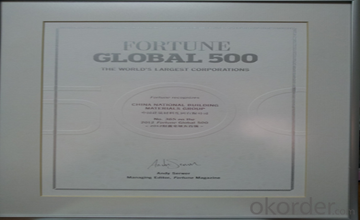


4.Company information
China National Building Material Group Corporation(CNBM), estiblished in 1984, as the largest group corporation of building materials in China. It ranked the 267th among the global FORTUNE 500 CORPORATIONS. And it's a China state-owned enterprise, ranked the 143 large-scale groups under the administration of the state-owned Assets supervision and administration commission of the state council.
With thelargest geosynthetics base about 667000m2 in China and have about 120production lines for all geo materials. For geotextile, our production capacity each day can be 300,000m2. We warmly welcome your order and visit. CNBM guarantee good quality and serivce with comptetitive prices.
- Q: Can packaging tape be used for sealing plastic tubing?
- Yes, packaging tape can be used for sealing plastic tubing. However, it may not be the most effective or durable option. It is generally recommended to use specialized tape or fittings designed specifically for sealing plastic tubing to ensure a secure and reliable seal.
- Q: Is packaging tape transparent?
- Indeed, transparency can be found in packaging tape. Various forms of packaging tape are manufactured using clear substances like polypropylene or acrylic, which enable them to possess a see-through quality. The advantage of this transparency lies in its ability to allow users to effortlessly view the contents of a package without the need for unwrapping. Furthermore, transparent packaging tape is often favored in situations where a polished and professional appearance is desired, as it effortlessly blends with diverse packaging materials. Nonetheless, it is worth mentioning that not all packaging tapes possess transparency, as there are also options available in colored or printed variations that cater to specific purposes or branding requirements.
- Q: Can packaging tape be used for heavy-duty packaging?
- Indeed, heavy-duty packaging can utilize packaging tape. Assorted varieties of packaging tapes can be found in the market, some of which are specifically engineered to withstand the challenges posed by heavy or bulky packages. Typically, these tapes are crafted using resilient materials such as reinforced fibers or potent adhesives, offering exceptional strength and ensuring secure packaging. They possess the capability to securely bind rigid and weighty boxes, preventing any unravelling or tearing during transportation. When selecting packaging tape for heavy-duty packaging, it is vital to take into account both the weight and dimensions of the package, as well as the unique requirements of the shipping or handling process.
- Q: Is packaging tape flammable?
- Packaging tape is generally not flammable. Most packaging tapes are made from materials like polypropylene or polyester which have high melting points and are resistant to flames. However, it is important to note that the adhesive used on the tape may vary depending on the brand and type of tape. Some adhesive formulations may contain flammable components, but these are typically present in very small amounts and are unlikely to cause a significant fire hazard. Nonetheless, it is always recommended to follow the manufacturer's instructions and keep packaging tapes away from open flames or potential sources of ignition to ensure safety.
- Q: How do I prevent packaging tape from losing its color over time?
- Here are a few strategies you can try to prevent packaging tape from losing its color over time: 1. Properly store the tape: To maintain its color for longer, keep your packaging tape in a cool, dark, and dry place, away from sunlight and extreme temperatures. 2. Avoid moisture: Moisture can damage the adhesive and color of the tape, so store it away from areas prone to water leaks or high humidity levels. 3. Opt for high-quality tape: Look for packaging tapes made with better quality materials that are designed to retain color for a longer period. 4. Minimize exposure to air: After use, seal the packaging tape tightly to reduce its exposure to oxygen, which can contribute to color degradation. 5. Handle with care: Rough handling can cause the color to rub off or fade faster, so be gentle when applying and removing the tape. 6. Consider protective coatings: If the packaging tape is important for branding or aesthetic purposes, you can explore using protective coatings or laminates to add an extra layer of protection against color loss. By implementing these measures, you can extend the lifespan and vibrancy of your packaging tape, ensuring it remains visually appealing for a longer period of time.
- Q: Is packaging tape safe to use on painted surfaces?
- Packaging tape is generally considered safe for use on painted surfaces, but there are a few factors that need to be taken into account. Firstly, it is crucial to make sure that the paint has completely dried before applying any tape. This usually takes about 30 days, depending on the type of paint used. Applying tape to fresh or wet paint can result in damage when the tape is removed. Secondly, the type of tape utilized can also impact the outcome. Most packaging tapes are designed to be easily removable without leaving any residue or causing harm to surfaces. However, there are some low-quality tapes or those with strong adhesives that may leave sticky residue or even strip off the paint upon removal. It is advisable to opt for high-quality packaging tape that is explicitly labeled as safe for painted surfaces. To err on the side of caution, it is always wise to conduct a test on a small and inconspicuous area of the painted surface before applying the tape extensively. This will help ensure that the tape does not cause any damage or leave any residue behind. If there are any concerns, it is recommended to consult the manufacturer's instructions or seek professional advice. In conclusion, when used correctly and on fully dried paint, packaging tape should be safe for use on painted surfaces. However, it is vital to exercise caution and select the appropriate tape to prevent any potential damage.
- Q: What are the considerations for using packaging tape on plastic or polyethylene bags?
- When using packaging tape on plastic or polyethylene bags, there are several considerations to keep in mind. Firstly, it is important to select the right type of packaging tape that is suitable for use on plastic or polyethylene surfaces. Some tapes may not adhere well to these materials, resulting in poor adhesion and the tape easily peeling off. It is recommended to use tapes specifically designed for use on plastic or polyethylene surfaces, as they are usually made with adhesive formulas that can adhere properly to these materials. Another consideration is the strength and durability of the tape. Plastic bags can often be lightweight and flexible, so it is important to choose a tape that can provide enough strength and durability to secure the contents of the bag. Look for tapes that have a strong adhesive backing and are resistant to tearing or stretching. The temperature and environmental conditions should also be taken into account. Extreme temperatures can affect the adhesive properties of the tape, causing it to lose adhesion or become brittle. If the bags will be exposed to high or low temperatures, it is recommended to choose a tape that is specifically designed for those conditions. Additionally, it is crucial to ensure that the tape does not damage the plastic or polyethylene bags. Some tapes may have strong adhesives that can leave residue or cause damage when removed. Look for tapes that are designed to have low residue, easy removal, or are specifically labeled as safe for use on plastic or polyethylene surfaces. Lastly, consider the aesthetics and presentation. Packaging tape comes in various colors and designs, so you may want to choose a tape that complements the bag's appearance or branding. It is also important to ensure that the tape does not obstruct any important information or barcodes on the bag. In summary, the considerations for using packaging tape on plastic or polyethylene bags include selecting the right tape, ensuring strength and durability, considering temperature and environmental conditions, preventing damage to the bags, and considering aesthetics and presentation.
- Q: How do I prevent packaging tape from leaving a sticky residue?
- There are several simple steps you can take to ensure that packaging tape does not leave behind any sticky residue. Firstly, it is important to choose the appropriate type of tape. Look for high-quality packaging tape that is specifically designed to leave minimal residue. Tapes with a low-tack adhesive or those labeled as residue-free are ideal. Before applying the tape, make sure the surface is clean and dry. Use a mild detergent or rubbing alcohol solution to wipe away any dust, dirt, or grease. This will improve the tape's adhesion and minimize the chances of residue formation. If you are unsure about the tape's residue potential, it is always a good idea to test it in a small, inconspicuous area first. Apply a small piece of tape and let it sit for a few hours or overnight. After removing it, check for any sticky residue. If none is present, you can proceed with confidence. When removing the tape, do so slowly and at a low angle parallel to the surface. Pulling it too quickly or at a high angle can increase the likelihood of leaving behind sticky residue. Take your time and be patient to avoid any damage or residue. If some residue remains, you can try using gentle heat or solvents to remove it. Use a hairdryer on a low setting to warm up the residue and then wipe it away with a clean cloth. Alternatively, you can apply a small amount of rubbing alcohol, white vinegar, or adhesive remover to a cloth and gently rub the residue until it dissolves. By following these tips, you can effectively prevent packaging tape from leaving a sticky residue and maintain a clean surface.
- Q: Can packaging tape be used for sealing medical or laboratory containers?
- No, packaging tape is not suitable for sealing medical or laboratory containers as it may not provide an airtight and sterile seal required for such sensitive and critical environments.
- Q: Food packaging, sealing tape printing and product manufacturers inconsistent with the use of it?
- It depends on whether it's an individual case or a whole lot of products,If it is a case, replacement is, and probably the supermarket will pay some money on behalf of, but not too much,If the whole batch of products are so, the problem is great, from the quality supervision point of view, at least the label failed, and from the industrial and commercial point of view is fraudulent consumers, manufacturers trouble,
Send your message to us
Wholesale Reflective Clothing Fabric Scotch Reinforced Packaging Tape
- Loading Port:
- Tianjin
- Payment Terms:
- TT OR LC
- Min Order Qty:
- 7500 m
- Supply Capability:
- 500000 m/month
OKorder Service Pledge
OKorder Financial Service
Similar products
Hot products
Hot Searches
Related keywords
